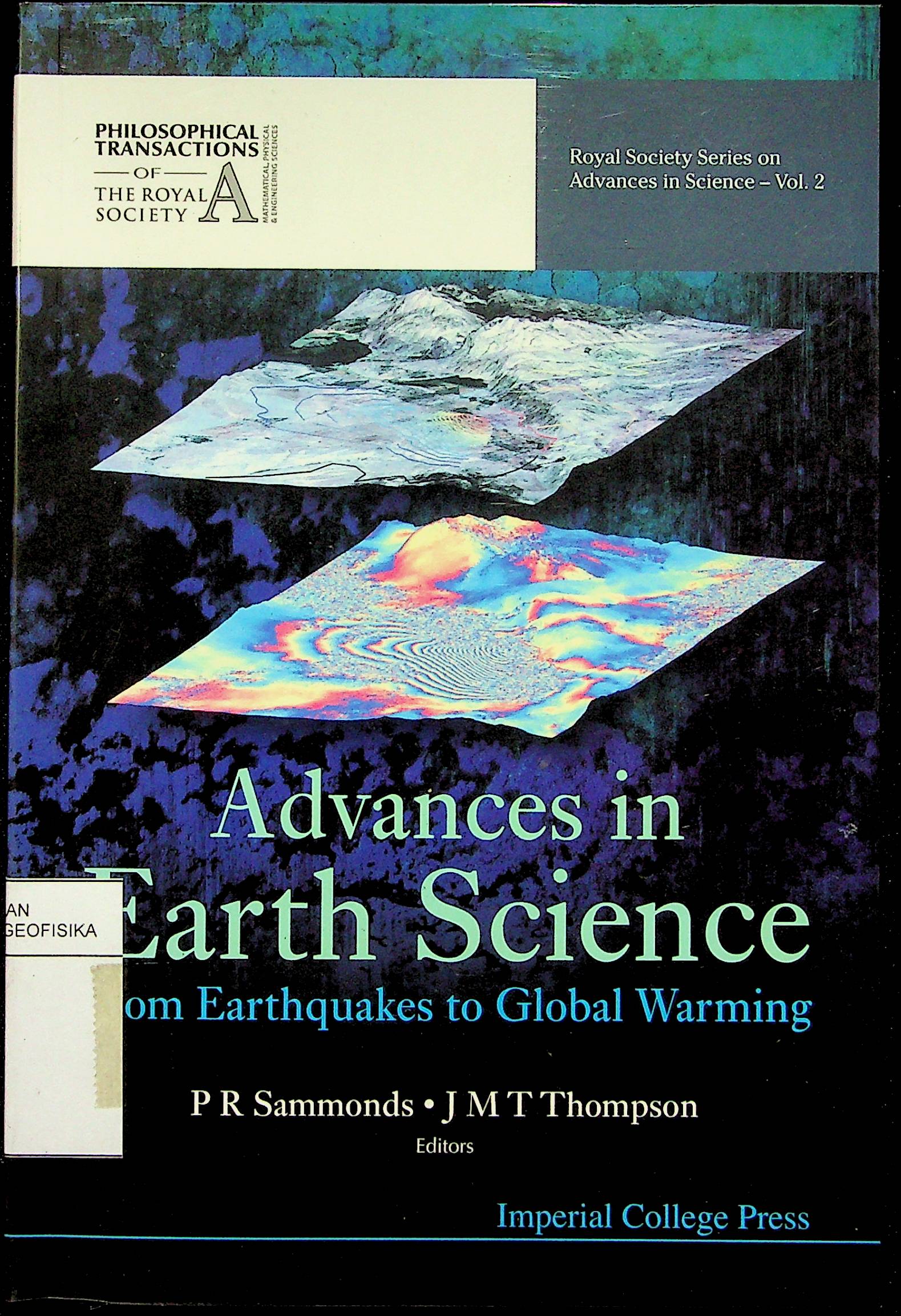This welcome volume is a collection of articles principally adapted from articles published in the Philosophical Transactions triennial issue. It very largely reflects the views of younger scientists, and highlights how the Earth Sciences continue to delight us with new ideas and controversies. Many of the authors are research fellows, or former research fellows, of the Royal Society, and the editors have successfully assembled an entertainingly eclectic mix. The book is divided into three sections covering Environmental Change, the Dynamics of the Earth, and Applied Earth Science, and the topics range from costing climate change, to the properties of the Earth’s core and objectively optimised Earth observation. In costing climate change Dave Reay notes that economics and climate change have a great deal in common, in that they seek to predict the future on the basis of what has recently gone before. He examines existing costbenefit analyses of greenhouse gas reduction policies and concludes thateconomics cannot provide a justification for political inaction on greenhouse gas emissions. Andy Ridgwell and Karen Kohfield illustrate the integrative thinking that is required in addressing the Earth system through the medium of dust. Dust is important globally because of the control it exerts on marine plant productivity and hence the uptake of CO2 from theatmosphere. The current perturbation of the carbon cycle is so large and fundamental that it has been suggested that the Earth has entered a new geological epoch. Yadvinder Malhi reviews the likely causes of different carbon sinks and sources and highlights the limits to the amount of carbon that can be stored in natural vegetation. It may be that terrestrial carbonstorage is unstable to significant global warming, and hence have the potential to accelerate rather than brake global warming. Finally in this section, Richard Twitchett explores what can be learnt from a better understanding of the largest mass extinction event in the last few 100 million years, at the end of the Permian. In the Dynamics of the Earth, Cathyrn Mitchell explores how tomography has been developed from a medical tool into a technique for imaging the ionised plasma around the entire Earth. It may be a little early to achieve ‘Ionospheric Weather’ forecasting, but real-time movies now allow us towatch the result of the Earth’s bombardment by solar wind during eventsknown as storms. Eiichi Fukuyama changes scale sharply to show how thedynamic rupture process of real earthquakes can now be simulated, giventhe right information. A major development has been the ability to obtain improved information on the rates of natural processes from the geological record. This is illustrated by Simon Turner in his review of the application of short-lived U-series to investigate the time scales of the magmatic processes that occur beneath island arc volcanoes. New continental crust is generated at island arcs, and Tim Minshull discusses how such crust is subsequently broken apart in response to plate tectonic processes. Some continental margins have considerable volumes of igneous rocks associated with continental break-up, and others do not. More research is required on paired continental margins, and in the development of computer models that can handle the transition from continental deformation to sea-floor spreading and the formation of a new ocean basin. There is continuing interest in the Earth’s core, its composition and when it was formed. FrancisNimmo and Dario Alfe focus on the properties of core-forming materials, how core motions generate the Earth’s magnetic field, and the evolution of both the core and the dynamo. They also briefly review the current state of knowledge for cores and dynamos on other planetary bodies. Chris Kilburn starts the Applied Earth Science section with a reappraisal of the hazards from large landslides. Their size and speed prevent effective hazard mitigation after collapse, and so the emphasis is on advance warning of collapse and how on far individual landslides may travel. The earthquake cycle remains poorly understood, but Tim Wright explains the exciting advances that have been made using radar interferometry with data from satellites. Detailed maps of the warping of the earth surface can nowbe obtained for the first time, and they provide remarkable observations of the earthquake cycle. Dominik Weiss, Malin Kylander and Matthew Reuer review the environmental and human impact of lead. Lead has been mined since ancient times, but by 1983 human activities accounted for ~97% ofthe global mass balance of lead. The amounts may have decreased since then, but the release of lead into the environment has also provided a geochemical tracer providing new insights into its fate and transport within marine and terrestrial systems. The move to clean up automobile emissions has resulted in a considerable demand for platinum in the manufacture of catalytic converters, and Hazel Pritichard reviews likely sources of platinum and palladium. They remain rare in the rocks of the Earth’s surface,
5
Advances in Earth Science From Earthquakes to Global Warming
J. M. T. Thompson (FRS)
Penerbit :
Imperial College Press
Tahun :
2007
Buku Text
Literasi
-
No Scan140
-
No Klasifikasi550
-
ISBN-
-
ISSN-
-
No Registrasi005B022015
-
Lokasi Terbit-
-
Jumlah Hal54
-
Label550 Sam a
-
Versi DigitalYA
-
Versi FisikYA
-
Lokasi Rak Buku Fisik01/B/01
-
Jumlah Exemplar Fisik Tersedia1







